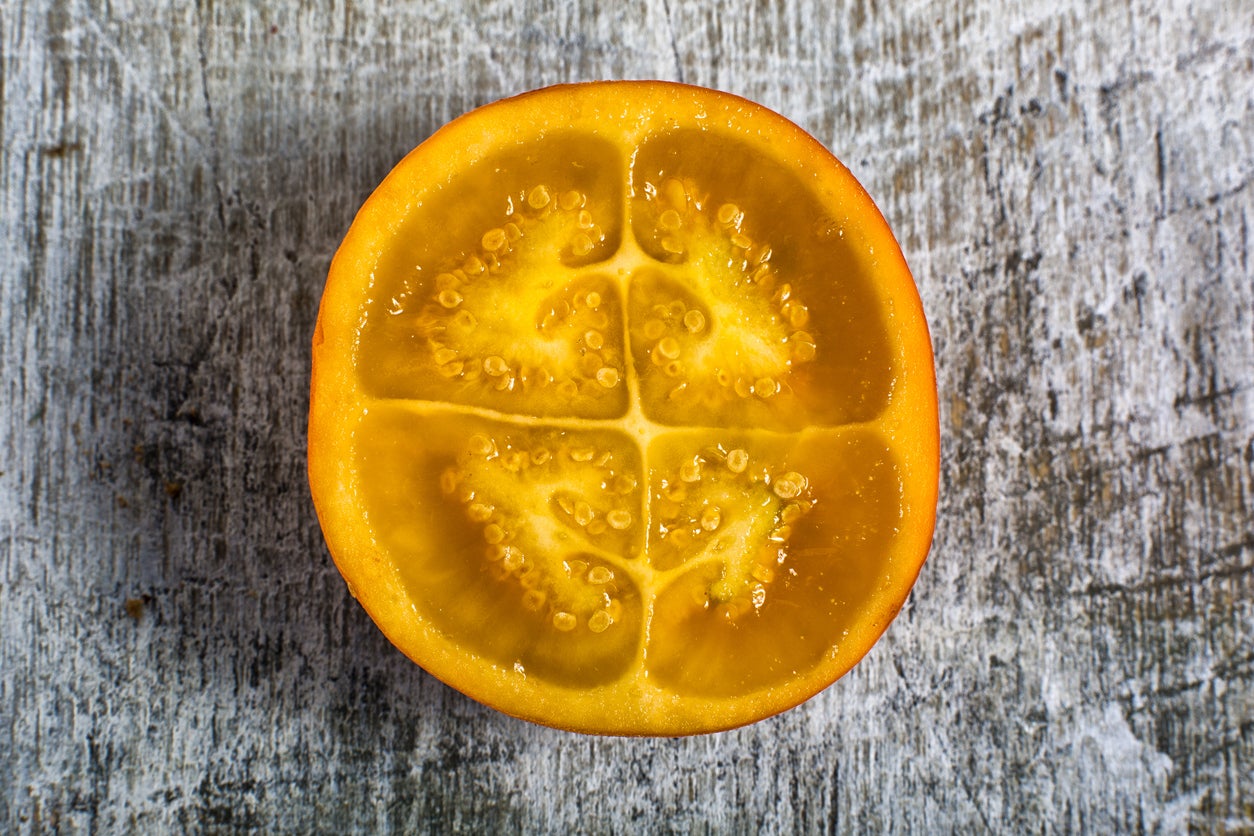Naranjilla Seed Propagation – Learn How To Grow Naranjilla From Seed


Naranjilla (Solanum quitoense) is considered a rare fruit tree in this country, and it’s true that none of your neighbors are likely to be planting naranjilla seeds. However, the plant, with its round, juicy fruit resembling oranges, is a common sight south of the border.
It’s a lot of fun to bring naranjilla into your garden, and inexpensive too, since you can easily grow naranjilla from seed. Read on for information about naranjilla seed germination as well as tips for propagating naranjilla seeds.
Growing Naranjilla from Seed
Naranjilla is a uniquely ornamental plant with an edible fruit that looks cool and tastes delicious. It’s a perennial shrub that doesn’t normally get above 8 feet (2 m.) high, so it works just fine in a container. The thick stalks of the bush get woody as they age, and some varieties grow spines. Most cultivated plants do not.
Narajillo is a spreading shrub that fills out with ornamental foliage. Its rich leaves grow up to 2 feet (61 cm.) long and nearly that wide. They are soft and woolly, covered with tiny purple hairs. Some types have spines on the leaves as well.
The flowers are small with five petals, white on top and fuzzy purple below. These give way to round, orange fruit that look like hairy oranges. The fuzz brushes off easily and you can drink the delicious juice.
The juice tastes like a unique mix of pineapple, lime, melon, and some say rhubarb. In South America, it is sold as Lulo juice, sweet and refreshing. You can cut the fruit in two and squeeze the juice into your mouth, but save those seeds for propagating.
Naranjilla Seed Propagation
If you are interested in naranjilla seed propagation, you’ll need to clean and treat the seeds. Spread them in a shady spot until the fleshy parts attached to the seeds ferment. At that point, wash the seeds and air dry them.
Sign up for the Gardening Know How newsletter today and receive a free copy of our e-book "How to Grow Delicious Tomatoes".
Many recommend that when you are propagating naranjilla seeds, you dust them with fungicide after they are thoroughly dry. Then you are ready for the next step, naranjilla seed germination.
Plant your cleaned, treated seeds in well-drained, sandy soil. Containers work well, and you can bring them indoors if the weather dips. You can also consider planting naranjilla outdoors if you live in a warm region. Cover the top of the soil with a thin layer of grit and kept the soil moist.
How soon can you expect naranjilla seed germination? It all depends. Sometimes growing naranjilla from seeds requires patience. Those propagating naranjilla seed may have to wait four to six weeks for the seeds to sprout, and sometimes much longer.
If you are planting naranjilla seeds in containers, sow more than one per pot to ensure that at least one of them sprouts. If you get several sprouts per pot, thin to leave only the strongest seedlings.
More patience is required for the fruit. Propagating naranjilla seeds is just the first step. You may not get fruit until a year after seeding. Here’s the good news: the fruiting continues for three years, with over 100 fruit per year.

Teo Spengler is a master gardener and a docent at the San Francisco Botanical Garden, where she hosts public tours. She has studied horticulture and written about nature, trees, plants, and gardening for more than two decades, following a career as an attorney and legal writer. Her extended family includes some 30 houseplants and hundreds of outdoor plants, including 250 trees, which are her main passion. Spengler currently splits her life between San Francisco and the French Basque Country, though she was raised in Alaska, giving her experience of gardening in a range of climates.